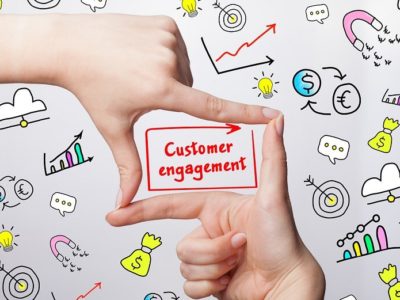In these uncertain times, customer retention is the only avenue that can ensure the sustainability of your business. The pandemic in the last year has made it even more clear that your existing client base is your most important asset. It has the power to pull your business out of the losing game and put in on a right track of growth.
SaaS and many other businesses have this intrinsic characteristic of being not just dependent on new customer acquisitions but also on existing business. The recurring revenue earned from them becomes the lifeline of this business. Hence, it is important to work around ways to ensure a continuous stream of income and even maximize it.
So, we will discuss strategies to ensure customer retention in this blog that you can implement in your business. But let’s first understand the importance of customer retention in its full glare.
Why is Customer Retention important?
It has been a known fact in the SaaS industry that increasing the customer retention by just 5% can lead to a revenue increase between 25% to 95%. So, what are the different sources of income an existing customer generates.
Recurring revenue
Due to the subscription-based business model, SaaS companies have to rely on the long-term relationship with their customers. Through this, they are able to maximize the lifetime value of the customer which is an essential metric in a SaaS firm. Although there are other sources too that add up to the CLV, recurring revenue plays a crucial role in this.
The cost of acquisition of a customer is too high in SaaS business. Companies have to invest heavily on marketing and advertising campaigns to reach out to the right customer. And there are many other factors involved in the sales process to finally convert a customer.
The upfront fee they pay during first purchase is normally not enough to offset the customer acquisition cost (CAC). It usually takes around 5 to 7 months for companies to recover the CAC fully. Hence, recurring revenue is important for companies to create a profit margin. And this is not possible without customer retention.
Account Expansion
This is another way of increasing revenue from the existing customer. When a customer has spent a substantial amount of time with your company, the bond between you two deepens. This can be leveraged to upsell or cross-sell them other relevant products of your company.
This has two benefits:
a) it increases the cash flow
b) it further helps you in client retention.
Client retention becomes easier as you increase your footprint in your customer’s organization. The more products they use of yours, the more dependent they become on your service. With time, as they adopt more of your products, you become an indispensable asset for them.
Brand Advocacy
When you are able to retain the customers for long, you reach the final goal in a customer journey – brand advocacy. It is the stage when the customer not only becomes loyal to your brand, but would be happy to recommend your product to others too.
This is the most powerful form of marketing for it attracts more customers with no cost involved. All you need to do is work towards customer delight and satisfaction and they would eventually turn into your brand advocate. But it is easier said than done.
In the below section, we would see how that works through customer retention.
Six strategies for customer retention
Having mentioned the importance of customer retention, let’s now look into the six strategies for customer retention. They are:
- Analyze churn and take steps to improve it
- Demonstrate value to the clients at all levels
- Give special focus to high-value customers
- Give a consistent customer experience
- Collect feedback and act upon them
- Educate and upgrade your customers
1. Analyze churn and take steps to improve it
Churn is the most dreaded and inevitable devil of a SaaS company. Nevertheless, it is not something which you cannot deal with. There can be many causes that are making this event happen and all you need to do is find that cause. You should do a proper churn analysis for all the lost customers and find out the root cause of it.
Maybe the churned customer was giving you hints right from the beginning but you never noticed. These hints may include repeated customer queries to the service team, less engagement with the product, or simply not being able to find value from the product. Whatever the cause, make sure you find one and act upon it to prevent further churn from happening.
2. Demonstrate value to the clients at all levels
There might be various personnel you would be involved with in the customer’s organization. They are the end users, the middle management and the upper management. To retain the customer organization, you have to demonstrate the value of your product to all of them in different languages.
The end-user has to be shown the efficiency in their work routine by using your product. The mid-management should realize the reduction in the overall workflow. And the higher management cares about the business value your product is offering like cost saved or extra revenue generated.
3. Give special focus to high-value customers
Customer retention at the core is revenue retention. There might be customers with different sizes for your organization. Few might be more than others. Hence, it is important to pay enough attention to those high-value customers so that you never lose them. A thank you card shows customers that you genuinely appreciate the business you are doing with them. It can inspire customer loyalty, meaningful connections, and word-of-mouth interactions.
If your bandwidth doesn’t allow you to cater all kinds of customers, that is, you are not able to maintain high-touch engagement with all, you must use both high-touch and tech-touch engagement with your customers. High-touch with high value customers and tech-touch with customers generating lower revenues.
4. Give a consistent customer experience
For you a customer is just one entity. But for a customer also, it should be the same. But unfortunately, most of the brands are not able to give that experience to their customers.
There are multiple departments making several touchpoints with the customer. Product experience might be different from service experience, sales and marketing experience, and customer success touchpoints. Hence, a proper implementation of customer experience should be held at all levels so that a consistent experience can be given to the client.
5. Collect feedback and act on it
To bring the two parties, customer and vendor, on the same page, a proper communication channel should be established between them. You must know what the customer’s expectations and opinions are about your product. Hence, a timely survey to get their feedback should be done from time to time.
It must contain both subjective and quantitative data to give you a clear picture. E.g. What features are your most favorite ones and why do you like them? What improvements do you want us to implement in the product? etc. Collecting feedback is just one part of it. Acting on it is an equally important part which must be executed to drive favorable results.
6. Educate and upgrade your customers
Another way to keep your customers bound to your company, apart from your product, is when you provide them with a continuous learning path. These learnings can be in the form of industry insights, market overview and sharing the latest development in your niche. When customers find themselves upgrading on a path, they want to hold their business, and when you are helping them do so, it becomes a strong retention factor for them.
Wrapping Up
Customer retention goes a long way when you infuse customer experience and customer success into your methods of nurturing customer relationship. You have to help your customer succeed while at the same time provide them with excellent experience.
Hand holding at every stage of difficulty they face becomes a strong factor for them to develop trust in you. And when you are able to nurture that trust, it becomes an unbreakable bond between your brand and the customer.






